Phone Pouch
Last Christmas I was given a new phone - a Jolla. It's a fine phone if you value software freedom and don't mind having to do a little technical fiddling to get some features working. It's also a little bigger than my old phone, and won't fit into the belt pouch that I carried it in. The old pouch was made by Skinth, and since I was happy with it I contacted them to see if they could make one slightly bigger (they do make a bigger model, but it's too much bigger, so I wanted something between). They don't seem to be communicating with the outside world any more though, so I thought - how hard can it be to make one myself? It's just a few bits of fabric sewn together. The extent of my previous sewing skills amounted to reattaching the odd button once in a while, so this was all new.
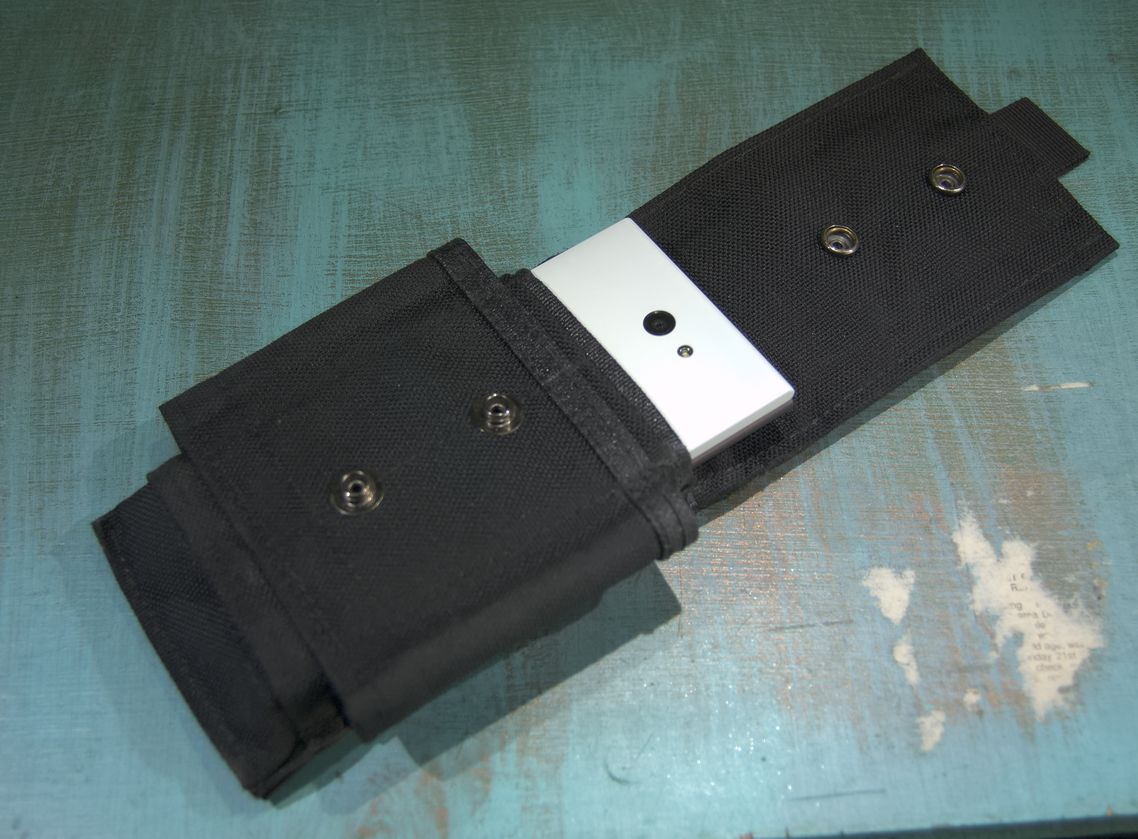
Doing it myself meant I could customize it to fit my needs precisely, which lead to a different design to the Skinth. For example the Skinth is primarily designed to be carried vertically, but I much prefer to carry it horizontally (so it doesn't get in the way as much when sitting down). For this it is better to put the opening along the long edge which will be at the top when worn. I also didn't bother with the extra pockets that I never use, except for a small one to keep a pen.
Free to choose any material that I wanted, I chose the obvious material to use to hold a phone: Kevlar. This is not easy to get hold of, as it is mostly available only in a loosely woven form intended for use in composite materials, which would fall apart if used on its own. Easy Composites sell Kevlar in various other forms, including two that seemed ideal: Coated Kevlar that would make a tough, water resistant exterior; Fleece that could be used for a soft interior to protect the phone from scratches. To attach it all together I obtained some Kevlar thread and a thick needle.
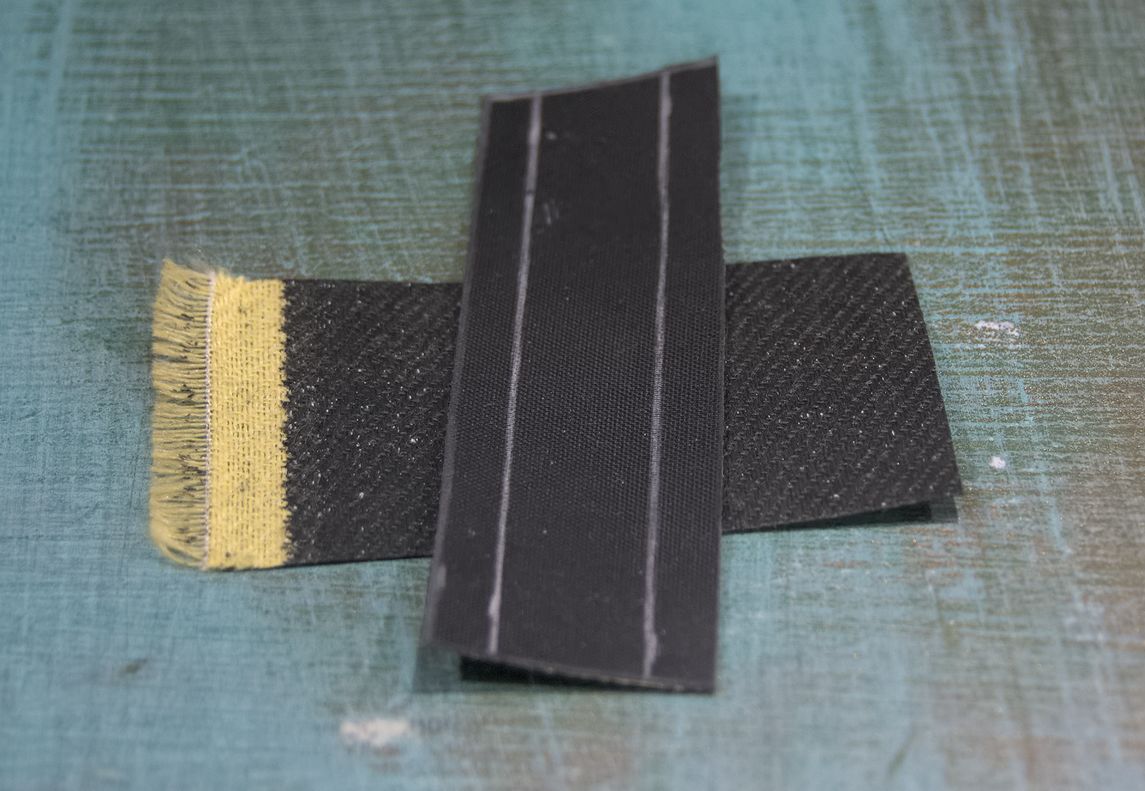
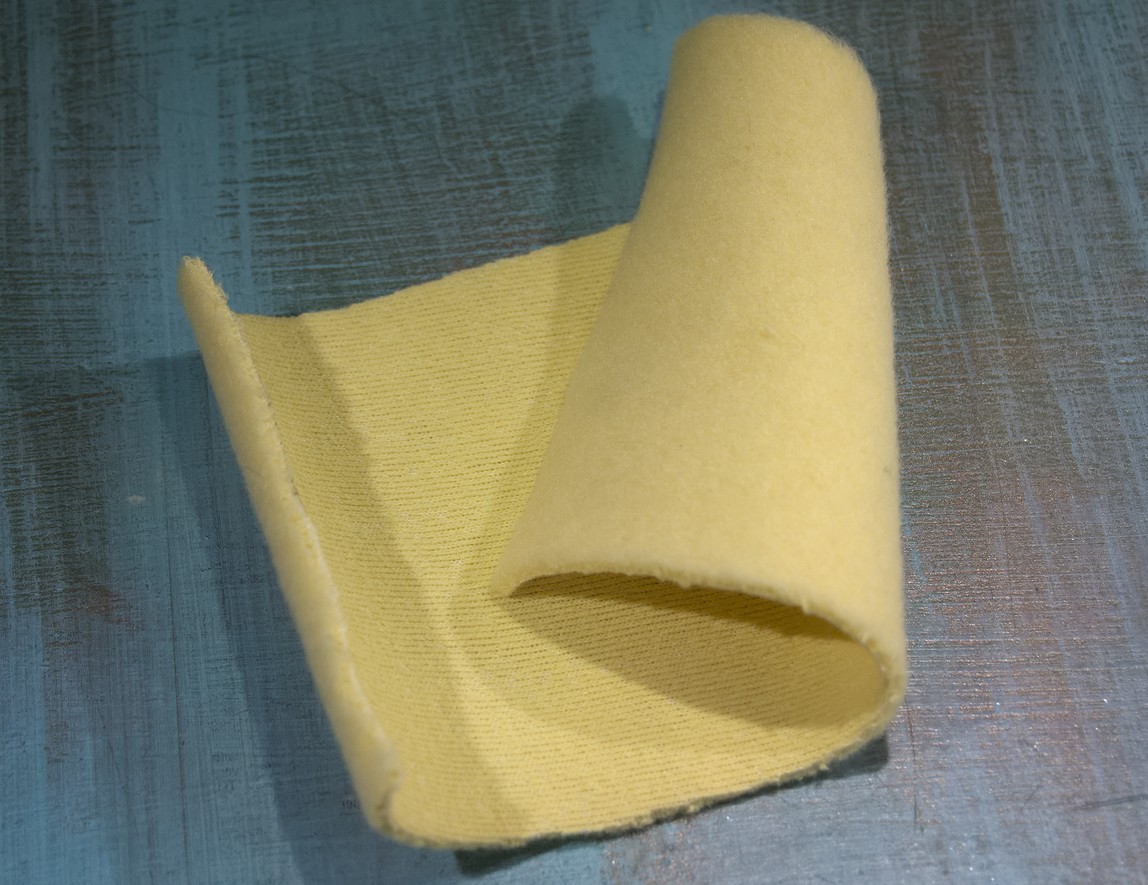
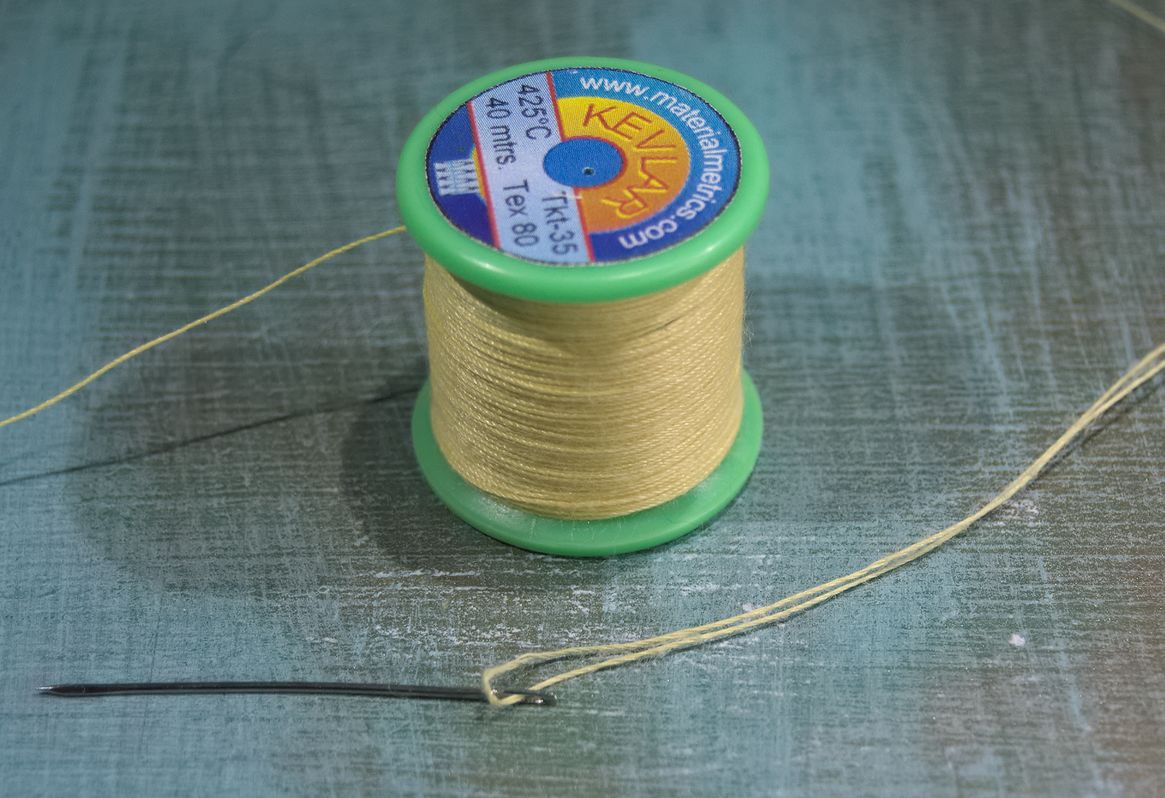
After working out what size and shape pieces of fabric I needed, I encountered the first difficulty - Kevlar is, by it's nature, really hard to cut. I had to use some serrated shears set a little tighter than normal to cut it cleanly. Then I faced a similar problem getting the needle to go through when sewing it all together, especially at the sides where there were four layers of the coated fabric (and two layers of fleece, but that's not hard to get a needle through). Still, as I got more practice it became easier and I got it all done eventually.
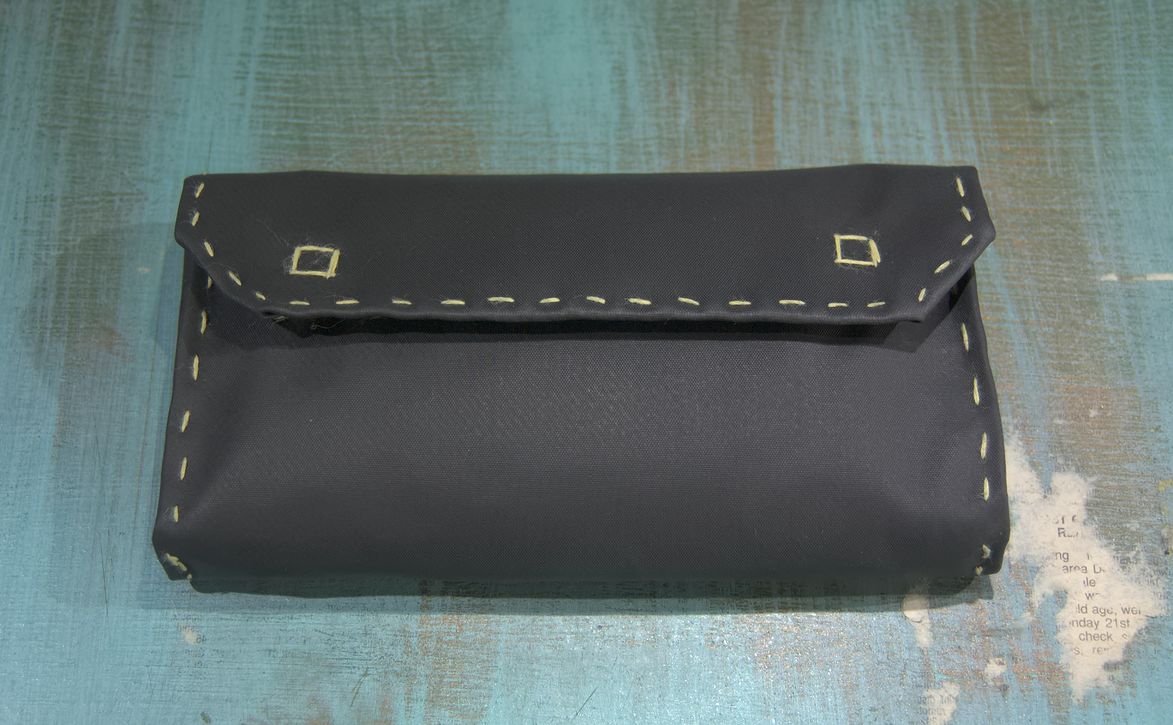
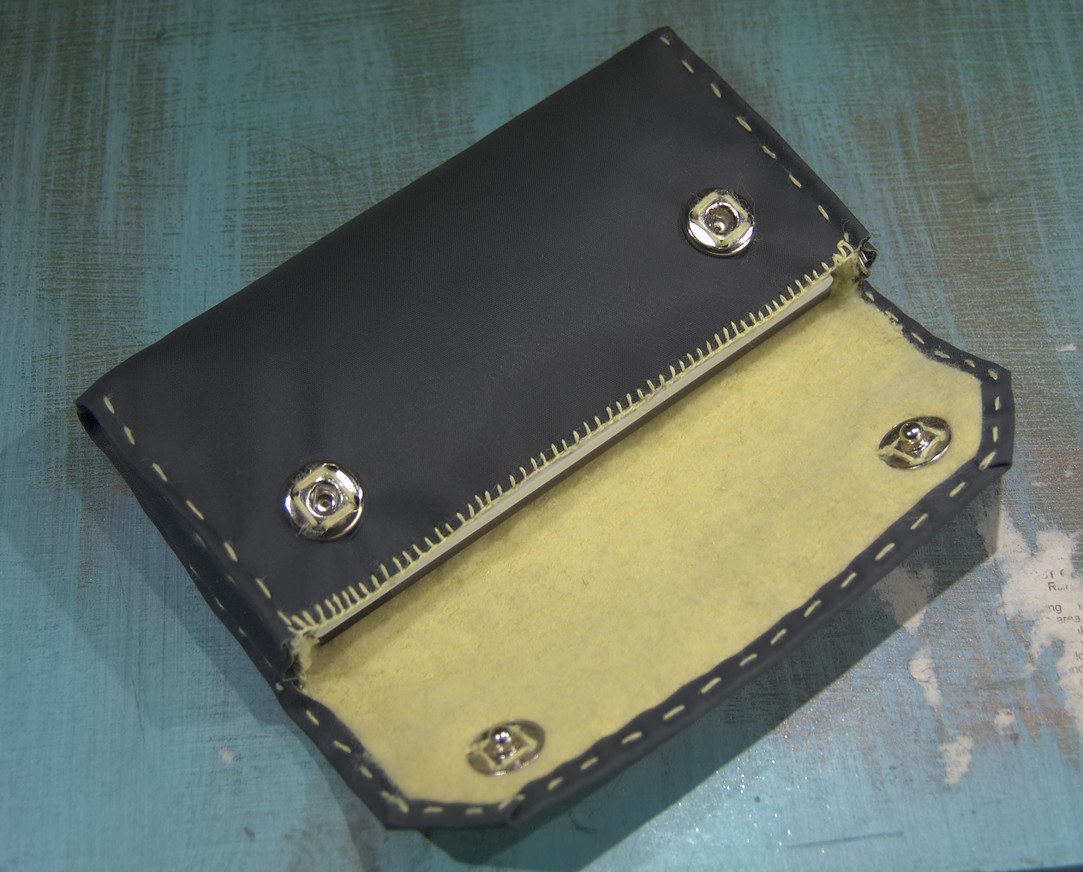
I used poppers (or snap fasteners, whatever you want to call them) to hold the flap closed. I prefer these to Velcro because they are quieter and don't attract lint. I originally used smaller 11mm ones, but they didn't feel secure enough, so I replaced them with the 15mm ones you can see above. I used sew-on poppers instead of the stronger riveted ones because I expected it would be difficult to punch a hole in the Kevlar to install them.
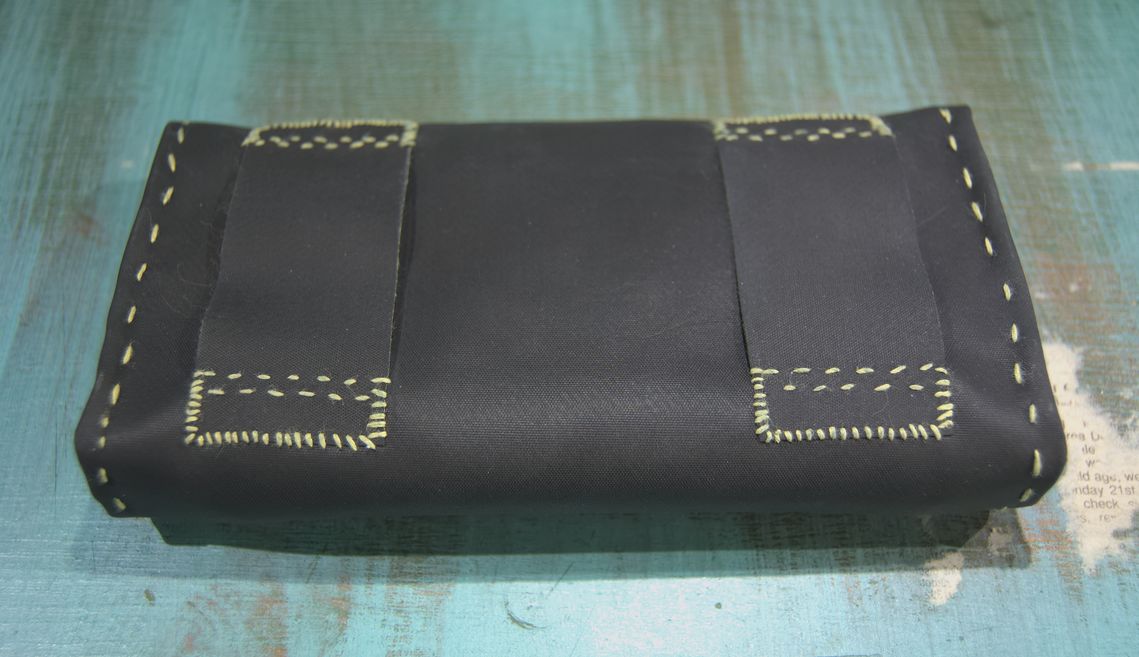
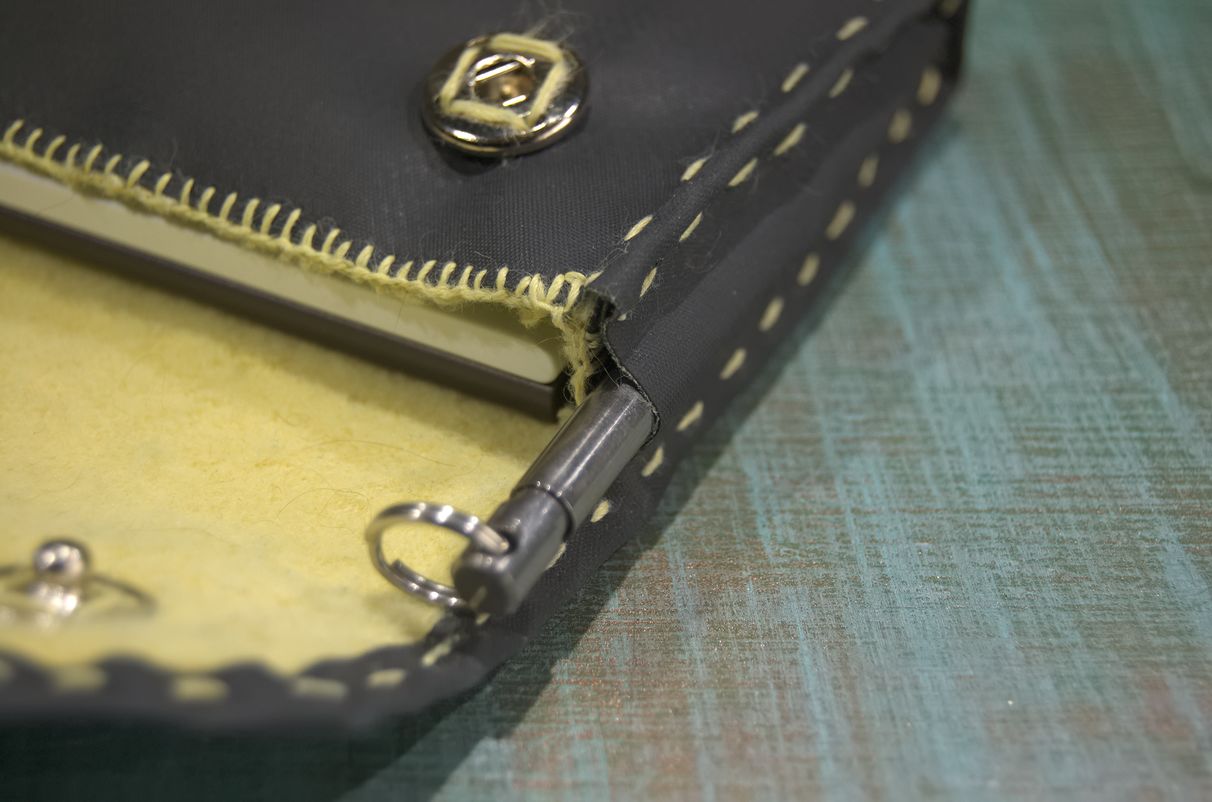
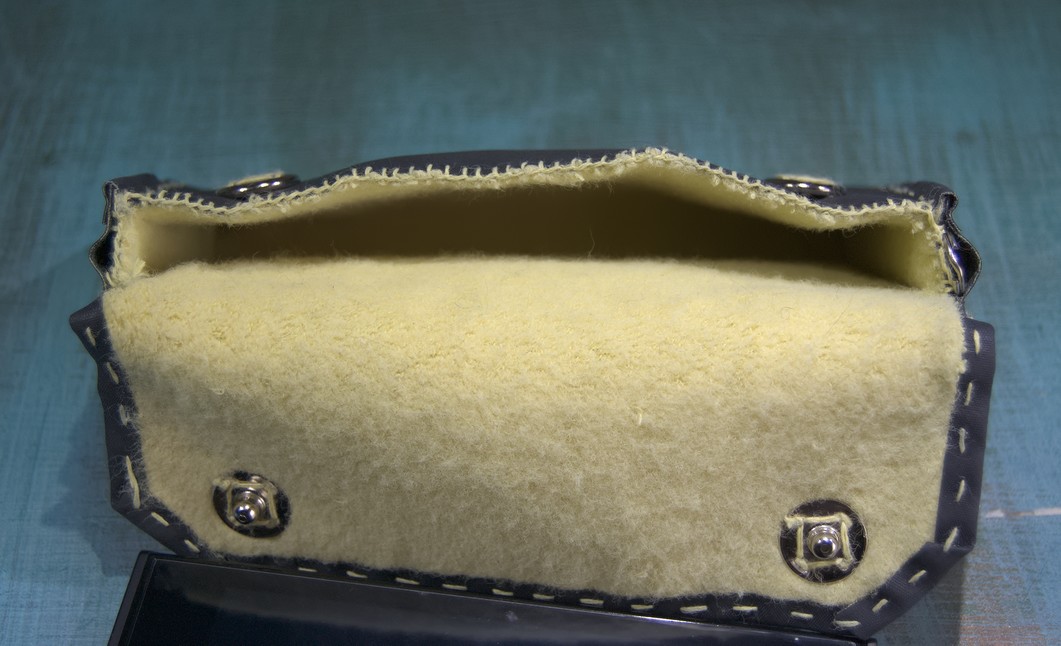
It's actually about the same size as the Skinth despite having more room inside, due to the omitted pockets. It's a bit lighter too, at 42g versus 70g, and is much more flexible, making it feel nicer to wear. It remains to be seen whether it will be as durable. Of course the material itself is very strong (5 times stronger than steel by weight), but the hand stitching is of dubious quality, and I don't know if the construction is strong enough in critical places, e.g. the stitching of the belt loops which see a lot of stress.